How to Identify Seedlings in the Vegetable Garden
These seedling identification photos will help you distinguish between vegetable seedlings and weed seedling in your garden. Learn how to tell the difference between vegetables in the seedling stage and common weeds, so you can successfully grow food to feed your family.

I was newly married when I stepped back into vegetable gardening. As a little girl, I helped plant gardens every year and knew how to identify bean, squash, beets, carrot seedlings and a few others.
But I wasn't good at identifying the first seedling leaves of vegetable types I had never grown, things like kale, parsnip, kohlrabi and cauliflower.
Let me tell you, there's nothing more discouraging than weeding a garden bed, only to realize you pulled up the tiny new vegetables and left the weed seedlings behind!
To be a good gardener and grow food for your family, you need to know what seedlings look like in each vegetable family.
I'm going to give you photo identification of vegetables types, but first I want to give you 3 tips that will make it even easier to distinguish between weeds and vegetable seedlings.
3 Tips to Make Seedling Identification Easier
Over the years, I've learned a few tricks that make it easier to identify vegetable seedlings. I especially love using these techniques when I'm growing something new!
My secret weapons are 1) wide garden beds, 2) planting the width of a bed and 3) using mulch.
Plant in Wide Beds
Where I grew up, folks would usually plant a single row of each seed type in their vegetable garden. That one row of carrots or beets would run the length of the garden and it was quite difficult to distinguish a tiny trail of carrots from the bountiful weeds that would also appear at the same time.
I've since learned it's easier to identify vegetable seedlings if you plant in "beds" or designated areas that are at least 16 inches wide.

With several rows of seedlings growing side by side, it's not difficult to distinguish between orderly rows of vegetables and scattered weed seedlings.
Plant Across the Width of Your Garden Bed
Planting across the width of your wide garden bed or designated area makes it easier to see seedlings when they appear.
In a 16 inch wide bed, you'll notice short, repeated rows of the same seed leaves, leaving no doubt as to which are vegetables and which seedlings are from wild plants.

Mulch for Weed Control and Row Definition
Using mulch is my favorite way to suppress weeds and create distinct rows of vegetable seeds in your garden.
Here's how I like to do it.
- Mulch the entire garden bed or designated area using 1 inch of rotten hay or rotten straw. Yes, it needs to be rotten or all those seed heads will sprout! You can also use old, dried out grass clippings (learn how to use lawn clippings here).
- Figure out the planting distance for your vegetable seeds, then use both hands to part the mulch and create rows where you'll plant (remember to make rows across the width of the bed).
- Drop seeds in those rows as directed for the vegetable type.
- Use a bucket or pail to scoop up fresh soil and dribble it over your seeds, covering to the depth recommended on the back of your seed packet.
- Water and watch for the first seed leaf to appear!
Vegetable Seedling Identification Photos
Use my 3 tips above, and you might not even need help identifying vegetable seedlings when they appear!
But just to be safe, I've included photo identification for each of the vegetable family groups. I chose to go by family, because most vegetables within a group will have the exact same leaf shape in the seedling stage, and it would be very redundant to post an image of each plant species.
Please note that this is photo identification for the first true leaves, not mature plants.
Bean Family (Legumes)
It doesn't matter if you're trying to identify bush beans, snap beans, pole beans, runner beans or shelling beans; they all start the same! Here is seedling identification for beans.

Peas also fall into the legume family and first leaves look quite different from those of the bean!

Cabbage Family (Brassica)
Vegetables in the cabbage family include the following:
- Broccoli
- Brussel sprouts
- Cabbage
- Cauliflower
- Kale
- Kohlrabi
- Mustard greens
- Radishes
- Turnip
It doesn't matter which of the above vegetables you grow: they all look very similar in the seedling stage!
Brassicas produce two heart-shaped leaves that grow opposite one another on a single stem. And the vegetable variety will affect color. For example?
Green cabbage will produce young plants that are completely green. But if you have red cabbage seedlings, they will be purple in color. Some varieties of kale have green leaves with purple stems.
With brassicas, look for form (not so much colors).

Carrot Family (Apiaceae)
There are lots of herbs in the carrot family (think chervil, cilantro, dill and parsley), but there are only a few vegetables. The list includes:
- Carrots
- Celeriac
- Celery
- Parsnip
Carrots have very slender, thin leaves. Sometimes they give themselves away by holding onto their seeds until leaves have fully opened. If you're new to growing carrots, don't be afraid to thickly plant them for easier plant identification.

Parsnip seedlings are difficult for first time gardeners, because they take a long time to germinate. But if you use the 3 tips I shared about, you should be able to distinguish them in the garden bed when they finally do appear. Parsnips are also prone to hang onto their large seeds until leaves are fully open, which can help with identification.
Corn
Field corn, flint corn, flour corn, sweet corn and popcorn all appear as a single, tightly rolled leaf blade. But inside what appears to be a single leaf are many more leaves that aren't initially visible to the eye. As the plant matures, they will unfold.
Again, planting in distinct rows will help you distinguish corn seedlings from grass species.

Goosefoot Family (Chenopodium)
There are many different vegetables and plants in the goosefoot family. But once again, I'm only going to give you the commonly grown types!
- Beets
- Chard
- Spinach
Beets and chard look very much alike in form. Beet seedlings generally have red stems, but chard stem color varies according to variety (they can be green, yellow and red).

Spinach seedlings have a similar shape to the above vegetables, only they have longer, narrow leaves that look oversized for the seedlings short stem.
Lettuce (Asteraceae)
There are so many types and varieties of lettuce! Once again, color with lettuce seedlings will be dependent on what you plant and even the leaf shape will slightly change with each type. Here are a few images to help you along.

Onion Family (Alliums)
Garlic, leeks, shallots and onion are all part of the allium family. Allium seedlings are tiny and take a long time to mature. For this reason, they're usually started indoors in early spring and are then transplanted into the vegetable garden later in the year.
If you do start your own seeds indoors, use seed starting soil and you shouldn't have problems with weeds. When very fine, grass-like greens appear, those are your alliums!

But you don't have to start garlic, onions or shallots from seed. To avoid the hassle, garden centers and seed suppliers often sell "sets" (tiny bulbs) that they grew the previous year. Sets or bulbs can be directly planted in the spring garden and the end result is a beautiful harvest of alliums.
Want to learn how to plant onion sets or garlic bulbs?
When these tiny bulbs sprout, the greens resemble a clump of grass. The identifying feature is the thickness and sturdiness of the green blades.

Garlic and leeks look slightly different from onions and shallots.
Instead of being vibrant in color, the sprouts lean toward a sage green. And unlike the other members of the family, garlic and leek tops aren't hollow but are flat and wide instead. I think they're much easier to mistaken for grass!
As mentioned above, leeks are usually started indoors so you shouldn't have troubles identifying them. And garlic usually has thicker, tougher blades than grass, so it's relatively easy to identify.
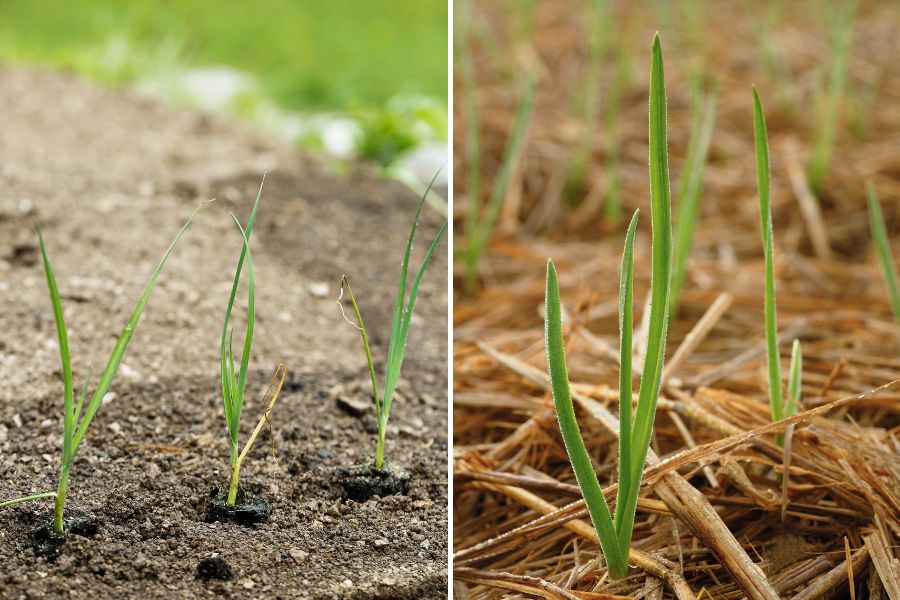
Squash Family (Curcubits)
The squash family seedlings are very large and while the young plants vary in size (cucumbers are smaller than zucchini or pumpkin), they all have the same distinct, large green leaves growing opposite one another on their short stems. The list includes:
- Cucumber
- Melon
- Pumpkin
- Watermelon
- Winter squash
- Zucchini
The seedlings of these vegetables probably won't look like anything else in your gardens and they're very easy to identify. Often, large seeds will cling to the small plant for several days after it appears, making each one stand out if you do have weeds.

Tomato Family (Nightshade)
Members of the nightshade family include:
- Eggplant
- Ground cherries
- Peppers
- Potato
- Tomatillos
- Tomatoes
In my northern climate, potato sets are the only nightshade that gardeners can directly plant in their vegetable gardens. All other plants in the family take a long time to mature and with their love for heat, seedlings are usually started indoors to get a head start on the growing season.
It's not difficult to identify seedlings grown indoors in potting soil. So here, I'm just going to give you photo identification for the potato.
Potatoes are quite easy to recognize because they have thick, chunky stems and large leaves.

How to Identify Leaves of the Adult Plants
Seedlings don't necessarily hold true to their original leaf shape. Carrots are a prime example.
While they initially have oblong slender leaves, it doesn't take long for them to send up the fern-like shape foliage we all recognize as carrot tops.
Members of the squash family are another example. The first leaves are oval with smooth edges. But as the plant matures, it grows leaves with jagged edges that resemble a maple leaf.
The important thing in the initial stage is to recognize vegetable seedlings so you don't mistake them for weed seedlings and pull the wrong ones!
If you get past this phase, you don't need to worry about learning how to identify adult plants. You'll grow with your vegetables and will observe the transformation. And that's something quite special to see!

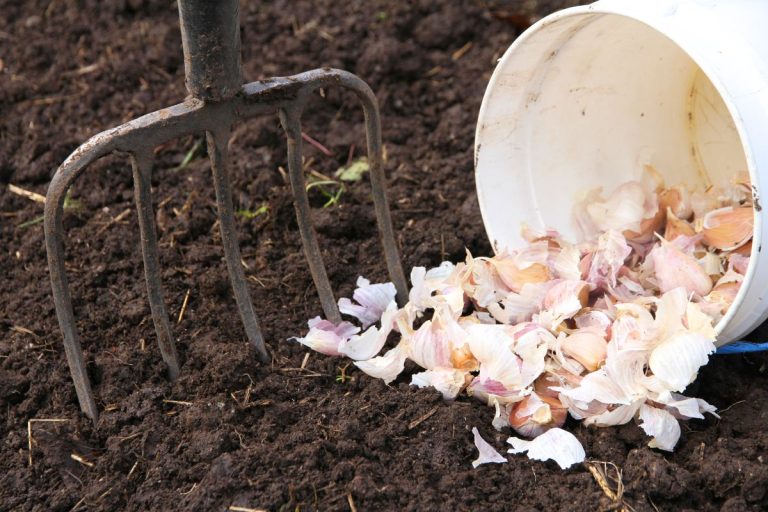
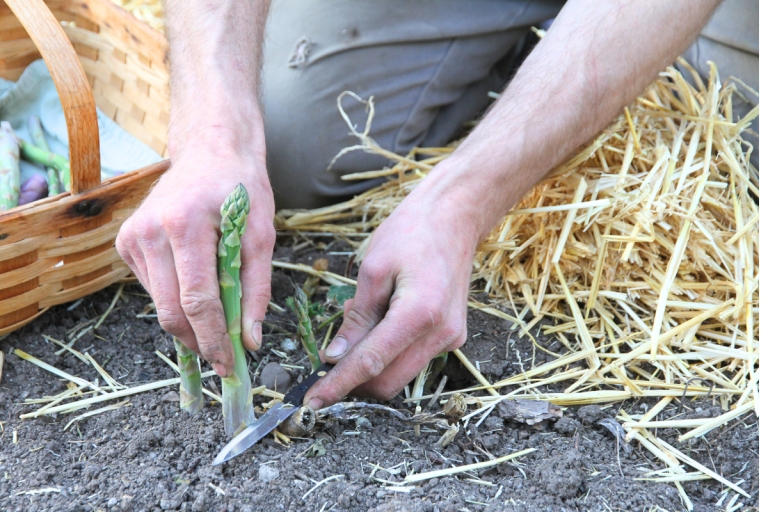
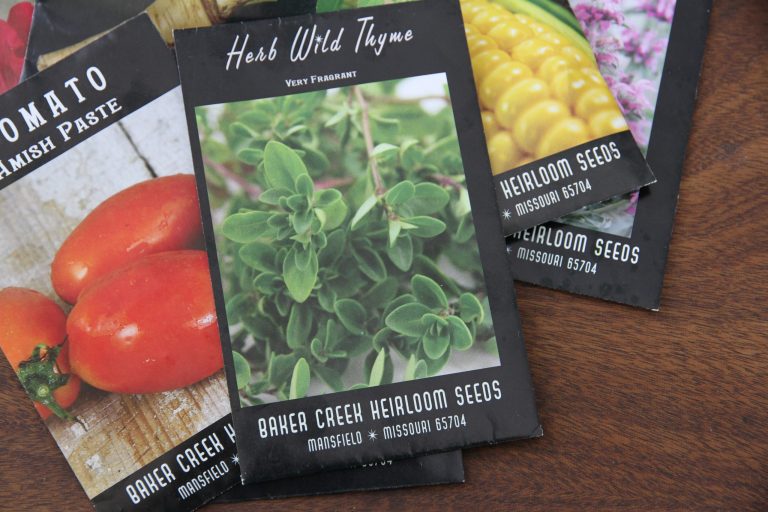


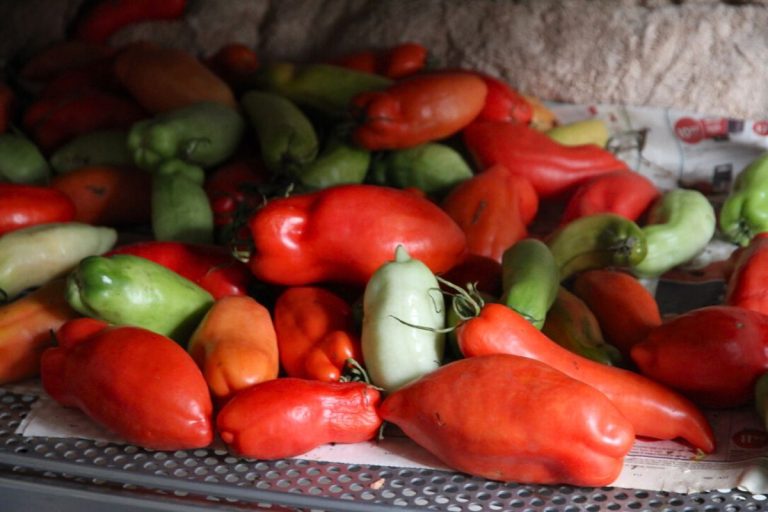
As a complete novice this is really helpful. Thanks for sharing 😊
Always glad to help someone out in the garden! 🙂
I'm not new to gardening, but this is the 1st time I've had to distinguish the difference between my plants and weeds. I can't thank you enough for this read, as it is everything I needed to know to save my garden.
I planted my carrot seeds about two weeks ago and since then it’s been high 40s and 50s, but rain like every other day. I noticed today teeny tiny seedlings popping up, but the leaves are a reddish brown. Are these plants goners because of the rain? Should I start over while I have time?
I'm sorry, but I've never dealt with this problem before. I know mature carrot tops can get a disease that turns the tops red, but I don't know if that would be the case for tiny seedlings?
Thanks! I have a bunch of random seedlings popping up in my garden. They look familiar but not certain. This helps somewhat. It's probably due to my composting or from shifting soil around to different beds.
It's really helpful to know what seedlings look like when it's time to weed garden beds. Hope this helped!
Is the picture at the bottom above "for gardening newbies" a carrot? Or in that family at least. I planted a bunch of unlabeled seeds and am trying to place whats what..I have 2 super pointy leaves that remind me of grass clippings. Thanks!
Hey Brittany! The image you are referring to is tender young spinach seedling. Hope that helps!
Thank you! These photos are invaluable to a novice gardener.
So glad they could help!